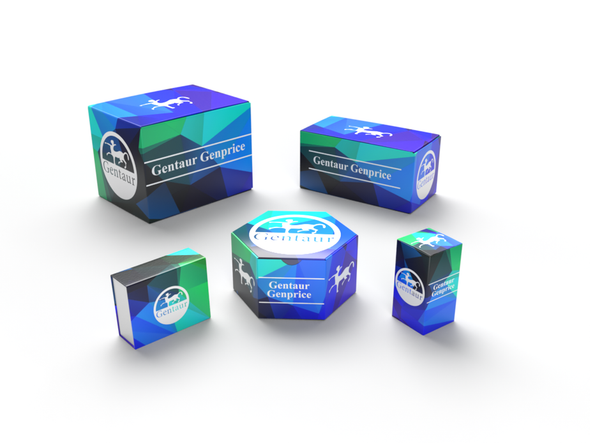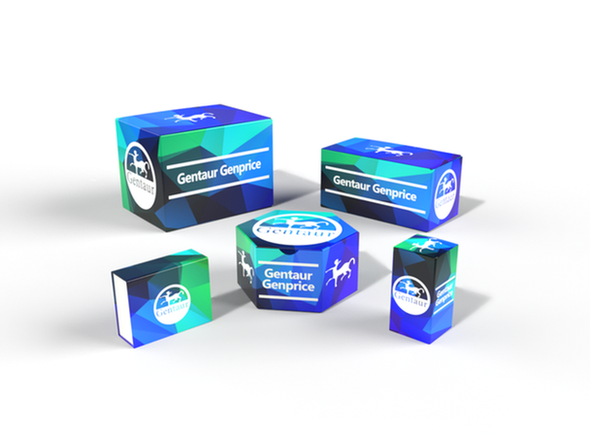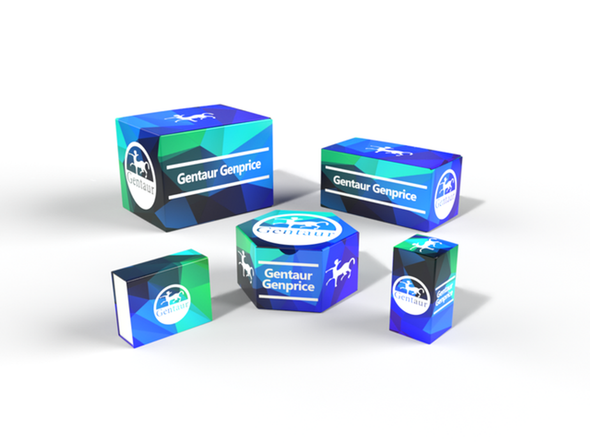Description
AKR1C3 Antibody | 18-113 | Gentaur UK, US & Europe Distribution
Host: Rabbit
Reactivity: Human, Mouse, Rat
Homology: N/A
Immunogen: Recombinant fusion protein containing a sequence corresponding to amino acids 1-323 of human AKR1C3 (NP_003730.4) .
Research Area: Cancer, Cell Cycle, Growth Factors, Neuroscience, Signal Transduction
Tested Application: WB, IP
Application: WB: 1:500 - 1:2000
IP: 1:50 - 1:100
Specificiy: N/A
Positive Control 1: U-87MG
Positive Control 2: 293T
Positive Control 3: LO2
Positive Control 4: A-549
Positive Control 5: DU145
Positive Control 6: Mouse kidney
Molecular Weight: Observed: 37kDa
Validation: N/A
Isoform: N/A
Purification: Affinity purification
Clonality: Polyclonal
Clone: N/A
Isotype: IgG
Conjugate: Unconjugated
Physical State: Liquid
Buffer: PBS with 0.02% sodium azide, 50% glycerol, pH7.3.
Concentration: N/A
Storage Condition: Store at -20˚C. Avoid freeze / thaw cycles.
Alternate Name: AKR1C3, DD3, HAKRB, HAKRe, HA1753, HSD17B5, hluPGFS, KIAA0119, aldo-keto reductase family 1, member C3 (3-alpha hydroxysteroid dehydrogenase, type II) , prostaglandin F synthase, dihydrodiol dehydrogenase 3, chlordecone reductase homolog, hydroxysteroid (17-beta) dehydrogenase 5, type IIb 3-alpha hydroxysteroid dehydrogenase, trans-1, 2-dihydrobenzene-1, 2-diol dehydrogenase, DDH1, PGFS
User Note: Optimal dilutions for each application to be determined by the researcher.
BACKGROUND: This gene encodes a member of the aldo/keto reductase superfamily, which consists of more than 40 known enzymes and proteins. These enzymes catalyze the conversion of aldehydes and ketones to their corresponding alcohols by utilizing NADH and/or NADPH as cofactors. The enzymes display overlapping but distinct substrate specificity. This enzyme catalyzes the reduction of prostaglandin (PG) D2, PGH2 and phenanthrenequinone (PQ) , and the oxidation of 9alpha, 11beta-PGF2 to PGD2. It may play an important role in the pathogenesis of allergic diseases such as asthma, and may also have a role in controlling cell growth and/or differentiation. This gene shares high sequence identity with three other gene members and is clustered with those three genes at chromosome 10p15-p14. Three transcript variants encoding different isoforms have been found for this gene.






